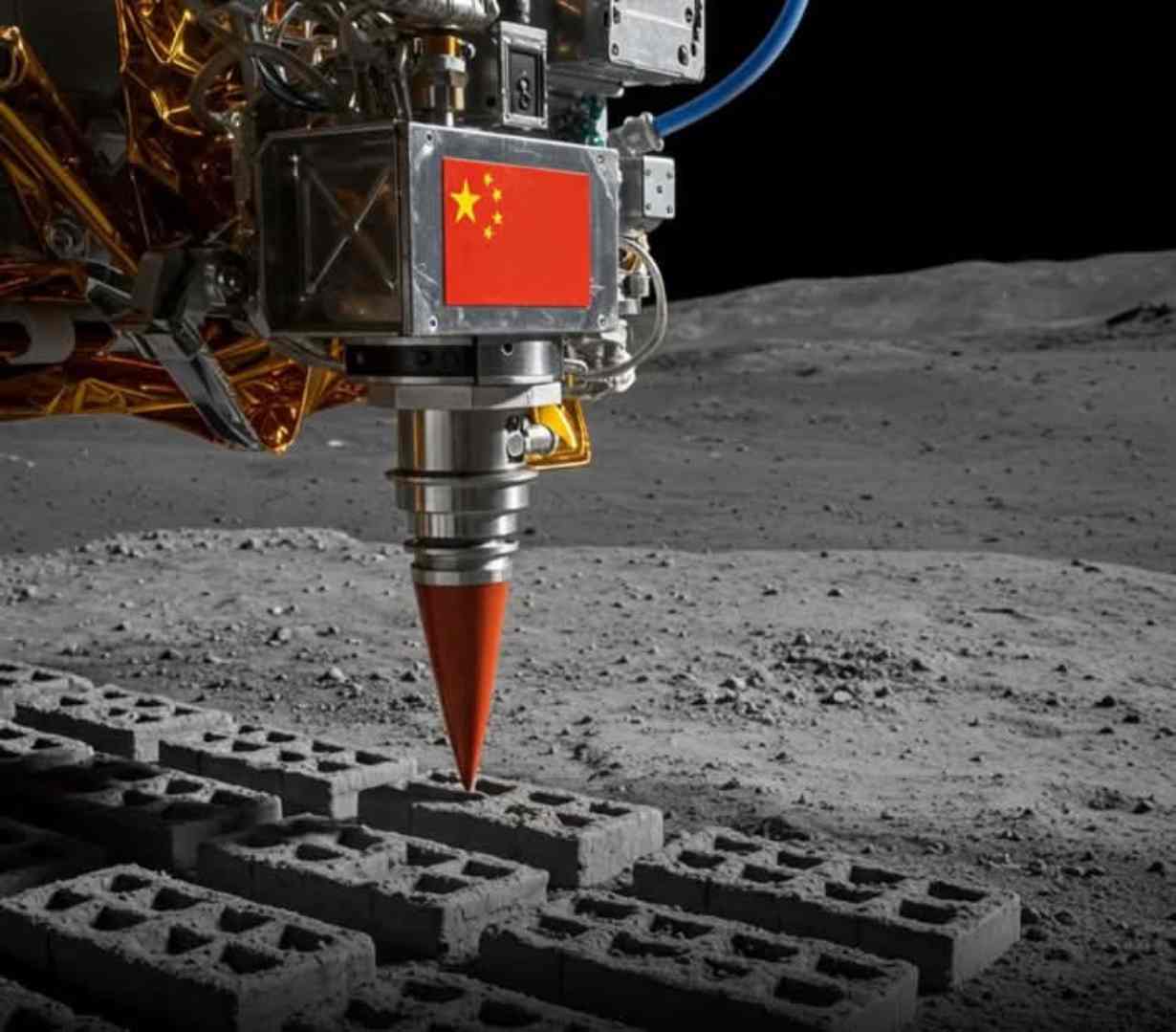China is undertaking a groundbreaking initiative to transform how structures are built on the Moon. This innovative approach involves using 3D printing technology with materials found directly on the lunar surface. The goal is to significantly lower the expenses and logistical difficulties associated with establishing a long-term human presence on the Moon, moving beyond temporary visits to building a permanent base. Central to this strategy is the upcoming Chang’e 8 mission, scheduled for launch around 2028, which will specifically test the viability of 3D printing structures using lunar regolith, also known as Moon dust.
Utilizing Moon Resources for Construction
The core principle behind China’s lunar construction plans is In-Situ Resource Utilization (ISRU). Instead of transporting vast quantities of building materials from Earth, which is incredibly costly and energy-intensive, ISRU focuses on using resources already present on the Moon. Lunar soil, or regolith, is plentiful and easily accessible, making it an ideal material for this innovative construction method. The ability to “live off the land” on the Moon is considered a significant breakthrough for long-duration missions and the eventual establishment of lunar bases.
Wu Weiren, the chief designer of the Chinese Lunar Exploration Program, has emphasized the crucial role of ISRU. He stated that if humanity intends to stay on the Moon for extended periods, it is essential to construct stations using the Moon’s own materials. Lunar soil, he explained, will become the raw material, printed into functional building units. This concept goes beyond mere scientific exploration, envisioning the Moon as a future site for human residence and research.
Advances in Lunar Brick Technology
Considerable progress has already been made in developing the necessary technology for lunar 3D printing. Chinese researchers have created a device capable of converting Moon dust into bricks. This innovative system, described as the world’s first, utilizes solar energy. It collects sunlight and transmits it to the Moon via fiber optics. By focusing sunlight, temperatures can reach between 1400 to 1500 degrees Celsius, which is hot enough to melt lunar soil. The molten material can then be shaped into bricks of various sizes using 3D printing technology. This method is efficient, uses no water, and does not require chemical binders, which are scarce resources in the lunar environment.
To confirm the durability and strength of these lunar bricks, samples made from simulated lunar soil are currently undergoing rigorous testing on China’s Tiangong space station. Over a three-year period, these materials will be exposed to the harsh conditions found on the Moon, including radiation, vacuum, and extreme temperature changes. This will provide vital information for future lunar construction projects.
The Chang’e 8 Mission and Future Plans
The Chang’e 8 mission in 2028 will be a crucial step in demonstrating the practical application of lunar 3D printing. This robotic probe is set to land near the Moon’s South Pole. There, it will conduct on-site investigations of the environment and mineral composition, and most importantly, test the deployment of 3D printing technologies on the lunar surface. The mission is expected to include a robot specifically designed to create “lunar soil bricks.”
This effort is part of China’s broader, long-term vision to establish the International Lunar Research Station (ILRS) by around 2030, with a basic version of the station completed by 2035. The ILRS is planned as a multinational, comprehensive scientific research facility, designed for long-term independent operation with short-term human involvement. The success of 3D printing on the Moon would dramatically reduce the amount of mass that needs to be launched from Earth, making the construction and expansion of such a station significantly more feasible. While the immediate focus is on proving the technology, the ultimate goal is to build a lasting presence on the Moon, one solar-fused brick at a time.
References:
“China to 3D-print bricks on the moon using lunar dirt in 2028 to pave way for future base (video).” https://www.space.com/china-3d-print-bricks-on-moon-2028
“Giant leap: China’s 2028 mission aims to 3D print bricks using moon dust, solar power for permanent lunar base.” https://www.businesstoday.in/latest/world/story/giant-leap-chinas-2028-mission-aims-to-3d-print-bricks-using-moon-dust-solar-power-for-permanent-lunar-base-425895-2024-04-12
“Daring AM: China’s Lunar Brick Machine Shows a Fast Track to Moon Construction.” https://3dprint.com/326880/daring-am-chinas-lunar-brick-machine-shows-a-fast-track-to-moon-construction/
“China’s moon mission to test 3D printing technology for habitation.” https://www.trtworld.com/magazine/chinas-moon-mission-to-test-3d-printing-technology-for-habitation-12999465
“Chang’e 8 to test use of 3D printing tech to build on moon.” http://english.www.gov.cn/news/archive/202304/24/content_WS6445b23fc6d01240c993d0c2.html
